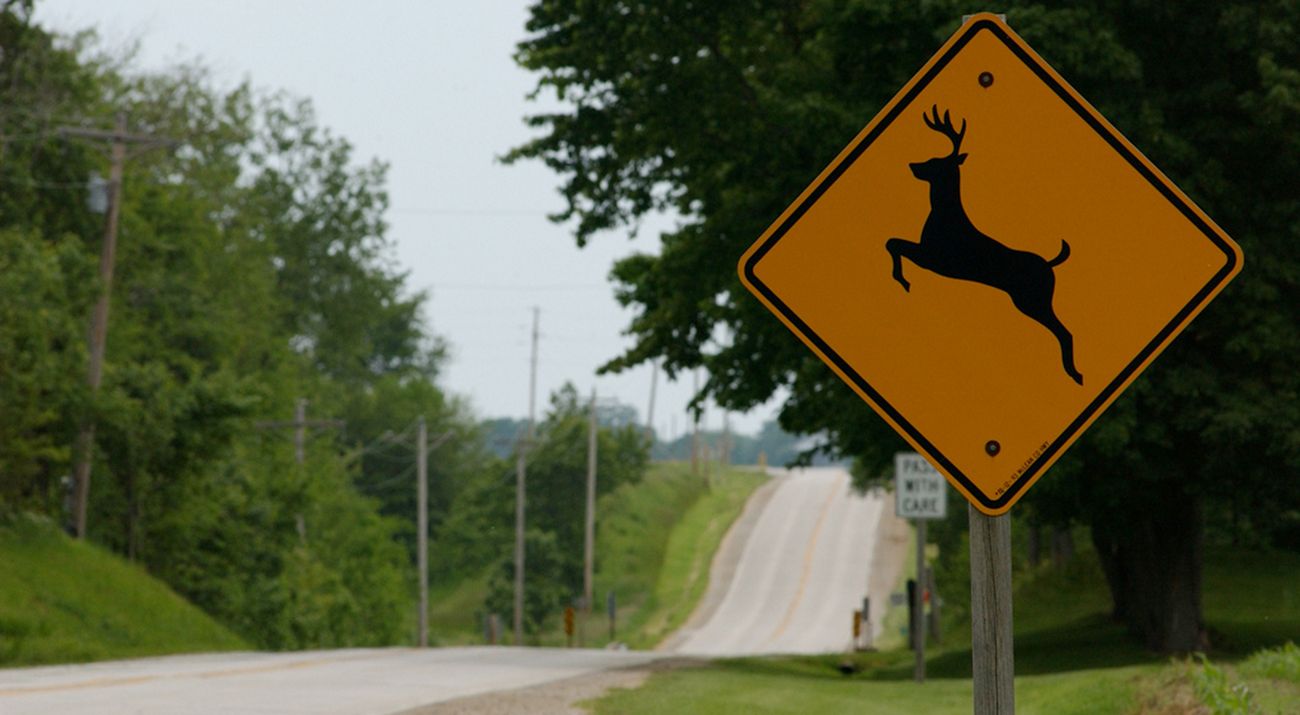Every year, at least a million motorists collide with wildlife on U.S. roads. It’s a disturbing experience which results in millions of dollars in damage, injury and, sometimes, people in the vehicles are killed. It is almost always fatal to the animals. Put simply, roads and wildlife just don’t mix. But there are ways to cut down the carnage.
In Wyoming, TNC scientist Corinna Riginos is taking the lead in solving this costly and distressing problem, using science to guide the way. Her new report, Impacts of Roadways on Wildlife in Wyoming assembles current data on wildlife-vehicle collisions and roadway hotspots for these accidents and makes recommendations on ways to help reduce them.
Wyoming roadway
MEETING THE CHALLENGE
Wildlife must move throughout the year to get to places where they feed, breed and rear their young. Roads present two challenges to wildlife: they are obstacles that are hard or even impossible for animals to cross, and they are places where animals can be killed. Some stretches of road are more problematic than others. So, one of the first things Riginos did was to identify the places where high numbers of wildlife-vehicle collisions happen. For example, places where highways cross seasonal migration routes will, predictably, be the sites of more accidents during the peak migration times.
Just as important, she noted the places where wildlife cross safely. Riginos also took a look at the traffic conditions that make roads more or less of a barrier to animals. By knowing where collision hot spots are, and which roads are hardest for animals to cross, highway departments can target their measures to reduce the problem at the places where they will be most effective.
THE SOLUTION
Crossing structures are hands down the best solution to this problem. These structures are built over or under roads to allow animals to cross without stepping foot on the pavement. They are, however, expensive, so we must use science to prioritize where to put them.
In addition to TNC science guiding on the ground action, we are a leading voice advocating for the funds needed to build these life-saving structures.
By the Numbers
- 1-2 million wildlife-vehicle collisions a year in the U.S.
- 85% of wildlife-vehicle collisions in Wyoming involve mule deer
- $25 million annual cost of human injury and damage in Wyoming
- $24 million annual cost of wildlife lost in Wyoming due to collisions
- $10,500 average cost for injury, damage and wildlife loss per collision with a deer in Wyoming
- $25,319 average cost for injury, damage and wildlife loss per collision with an elk in Wyoming
- $37,873 average cost for injury, damage and wildlife loss per collision with a moose in Wyoming
Note: Many wildlife-vehicle collisions go unreported.
OTHER MEASURES
Crossing structures aren’t an option everywhere, for economic and/or structural reasons. There, less effective measures, might reduce the problem or be used on an interim basis.
- Riginos serendipitously found that placing white canvas bags over certain highway reflector signs reduced collisions by 66%.
- Mobile digital warning signs can be located at hotspots during the most dangerous crossing periods, advising motorists to reduce speed and be vigilant.
- Sadly, reducing speed limits on highways, at best, has a very small impact on this problem. It should not be viewed as a long-term solution.
TNC’s cutting-edge science has shaped a strategic vision for tackling this serious problem. We play a vital role in the Wyoming Wildlife and Roadways Initiative, a partnership of state and federal agencies and private organizations charged with implementing measures to reduce wildlife-vehicle collisions statewide.
WHY SUPPORT TNC?
TNC’s cutting edge science has shaped a strategic vision for tackling this costly and distressing problem. TNC plays a vital role in the Wyoming Wildlife and Roadways Initiative, a partnership among several state and federal agencies and private organizations charged with implementing measures to reduce vehicle wildlife collisions state-wide.




